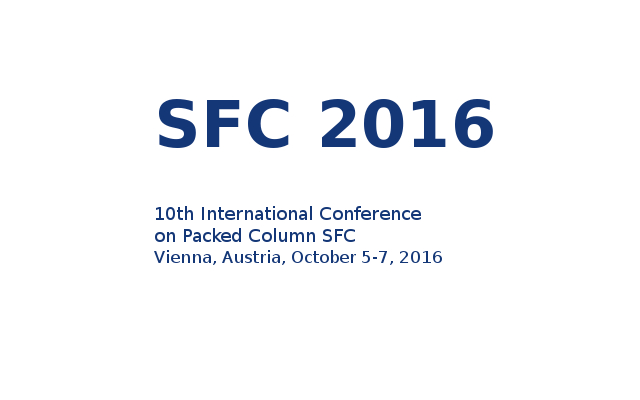Die Green Chemistry Group, eine Nonprofit-Organisation zur Förderung umweltfreundlicher, nachhaltiger Forschung & Entwicklung in der chemischen Industrie, organisiert und präsentiert den SFC-Kongress 2016 – vom 5. – 7. Oktober in Wien, Österreich.
Die SFC 2016 versteht sich als das Forum für neuste Anwendungen und Applikationen im Bereich der wachsenden Spitzentechnologie SFC (supercritical fluid chromatography). Führende Wissenschaftler aus der pharmazeutischen Industrie sowie Forscher und Innovatoren im Bereich der Chromatographie werden sich im Zuge der Konferenz in Vorträgen und Posterpräsentationen austauschen.
Chromicent ist Teil des Programms der SFC 2016 und stellt in Zusammenarbeit mit Frau Prof. Parr von der Freien Universität Berlin ein Poster aus.
Titel:
Supercritical Fluid Chromatography for fast and efficient impurity profiling in pharmaceutical quality control of carbamazepine – A Quality-by-Design based method development approach
Abstract:
Detection of impurities in active pharmaceutical ingredients (API’s) has always been a challenging task in pharmaceutical development. HPLC is a well-recognized analytical method for impurity profiling of various classes of drugs. However, some highly polar analytes interact only insufficiently on conventional RP columns and their analysis in still a challenge. Supercritical fluid chromatography (SFC) as orthogonal separation technique to HPLC may help to overcome these issue.
To check for the general potential of SFC separations as alternative, a state-of-the-art SFC method has been developed for impurity profiling of carbamazepine. Incorporating Quality by Design (QbD) principles to the method development approach by using a statistical software package allows to study the relationship between chromatographic parameters (factors) and the resolution (response) between the peaks of interest.
In a screening phase the factors known to have major effect in column selectivity were studied. In the second phase the chromatographic parameters identified to affect the resolution were studied with additional instrument settings. In both phases statistical concepts with experimental design plans (Design-of-Experiments) are used as an efficient and fast tool to simultaneously gain knowledge about the influencing factors and interactions. An operating space within the design space is established and a verification study confirms the robustness of the final method.
Total analysis time are only some minutes, which is an impressive increase in productivity in comparison to the method published in the European Pharmacopeia, which has a run-time of 110 min.
